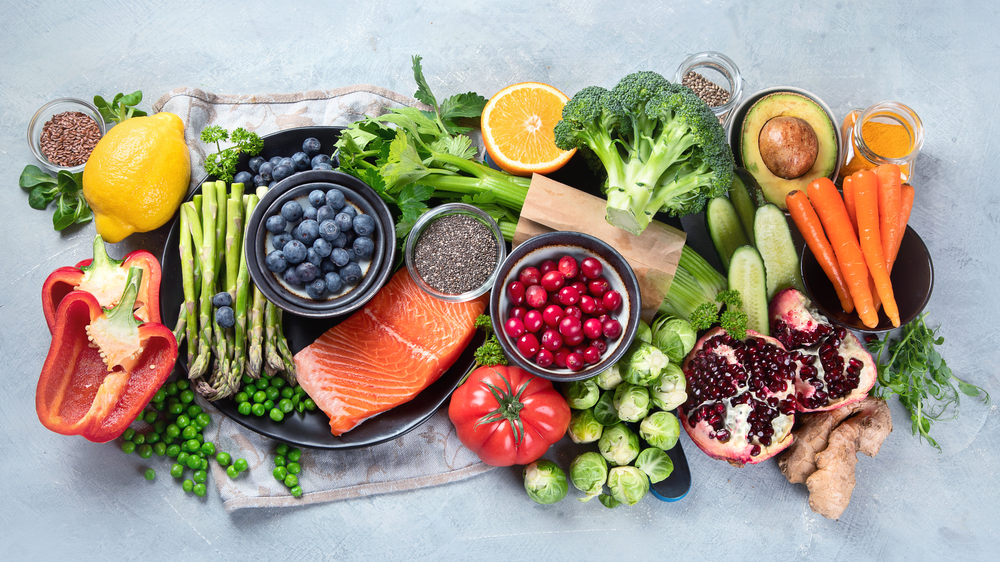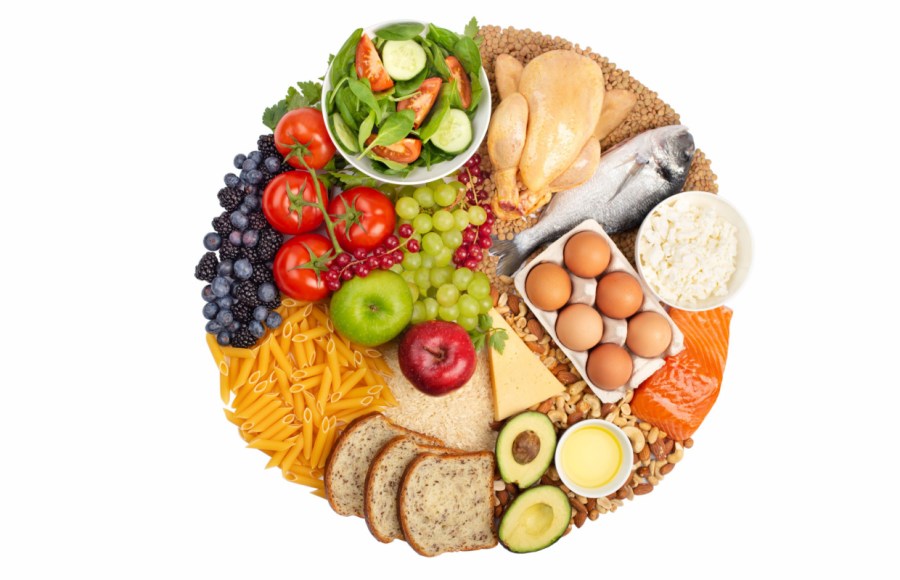Knowing your food groups is the first step to a healthier you. Let’s take a closer look at the benefits of the different food groups, along with an in-depth guide to which foods you should be eating regularly – and which you should be limiting…
When it comes to weight loss or weight maintenance, our bodies are actually quite straightforward machines: we simply have to use up more calories than we consume. And the only way to achieve this successfully over the long term is by adopting a healthy lifestyle.
Losing weight through diet alone is not always a realistic option, as you may feel like you are starving or depriving yourself of food; but it also doesn’t have to mean that you need to run a half marathon three times a week! Invest the time now in improving your lifestyle, and long term you’ll see a slimmer, healthier and more energetic you.
Related: Pre-workout nutrition for women: what to eat & when
The main purpose for food is to give us energy, of which around 60 per cent is used by our vital organs – the brain, heart, liver, kidneys etc. – with the rest then used by our body physically. The components of foods have different roles and functions, but they are all designed to work together; therefore, ‘diets’ that recommend reducing or eliminating different food groups can damage your health.
Fats: the good and the bad
Fat does not necessarily make you fat, as long as it is the ‘good’ fats that you are eating. Everybody needs fat in their diet as it is required for important functions such as protecting our major organs, maintaining body heat and providing key nutrients like vitamins A, D and E – but its primary function is to be one of our main sources of energy. It is only when we exceed our body’s needs for fat, or consume the wrong type, that we cause problems such as high blood pressure and obesity.
The simple way to look at fats is to classify them into two types: saturated (bad) and unsaturated (good). Saturated fats are the ‘bad’ fats you should try to avoid – they remain solid at room temperature and have usually been processed in some way. They are mainly found in animal products such as cheese, meat, butter and margarine, and Unsaturated fats are purer and much better for you.
They can be found in vegetable sources, namely oils – olive, sunflower, rapeseed, grapeseed and sesame – as well as nuts and seeds. Fish, which contains that all-important omega-3, is also an excellent source of ‘good’ fats.
Related: Fat, sugar & salt: are they always bad for you?
Carbs: the energy givers
Generally, carbohydrates come from plant foods such as fruits, vegetables, grains and legumes. A key source of energy, they also play a role in the function of our internal organs, our nervous system, and in fuelling our muscles. When eaten, the body breaks carbohydrates down into simple sugars (called glycogen). The body then uses these as an energy source.
Like fats, there are essentially two types of carbohydrates – starches and sugars – which can both be found in pure or refined forms:
- Natural sugars – from fruits and vegetables.
- Refined sugars – found in honey, brown sugar, soft drinks, cakes, biscuits, jams and sweets.
- Natural starches – found in wholegrain and wholemeal breakfast cereals, wholemeal flour and bread, wholemeal pasta, brown rice, nuts, potatoes, lentils, chickpeas, banana sand root vegetables like carrots.
- Refined starches – are found in sugary, processed breakfast cereals, white flour, white rice, white pasta, white bread, biscuits and cakes.
Refined carbohydrates are essentially ‘white’ and have already been broken down into simple sugars, a process your body would normally do. When they are eaten they dump sugar into your bloodstream. This results in short bursts of energy and mood swings. Sticking to the natural sources will provide more stability in your blood sugars and is much better for you. This is because they also contain fibre, essential for a healthy gut.
Related: The best carbs for runners & and when to eat them

Protein: the immunity and body booster
Protein is a key component of our hair, nails, eyes, skin and internal organs. It is also essential for a healthy immune system. It allows the body to grow and repair muscles and tissues, while keeping our hormones in check.
Good sources of protein include animal meats (skin and fat removed), fish, eggs, milk, yoghurt, nuts, seeds, tofu, beans and oats. Bad sources are essentially those that have been processed such as ham, salami and pies.
Related: High-protein & low-fat recipes for classic meat dishes
Fibre: the tummy filler (and regulator!)
While not a major food group as such, fibre is important for healthy weight loss as it fills you up and keeps you full for longer. There are two types of fibre – soluble and insoluble. Soluble fibre is found in pulses, fruit and vegetables. It helps to reduce the body’s ‘bad’ cholesterol and control blood sugar levels.
Insoluble fibre is found in wholewheat bread, brown rice and fruit. It helps the passing of food through your intestines, helping to prevent constipation and other gut problems.
Should I be eating all the different food groups?
Our bodies are designed to need all the different food groups for optimal vitality and wellness. Omitting certain food groups can actually cause you to put on weight. This is because the body goes into survival mode, thinking it is being starved, so it stores fat in order to keep your vital organs functioning and essentially keep you alive. When we start to eat normally again we are adding more calories but not burning off the fat that has been stored. This leads to excess body fat which is much harder to shift.
So, be sure to eat a range of foods from all the different food groups to keep your body functioning at its best – but try to focus on natural and unprocessed whole foods where possible. For example, choose unsaturated fats over saturated, natural sugars over refined and unprocessed meats over processed. Save the alternatives for occasional treats!








